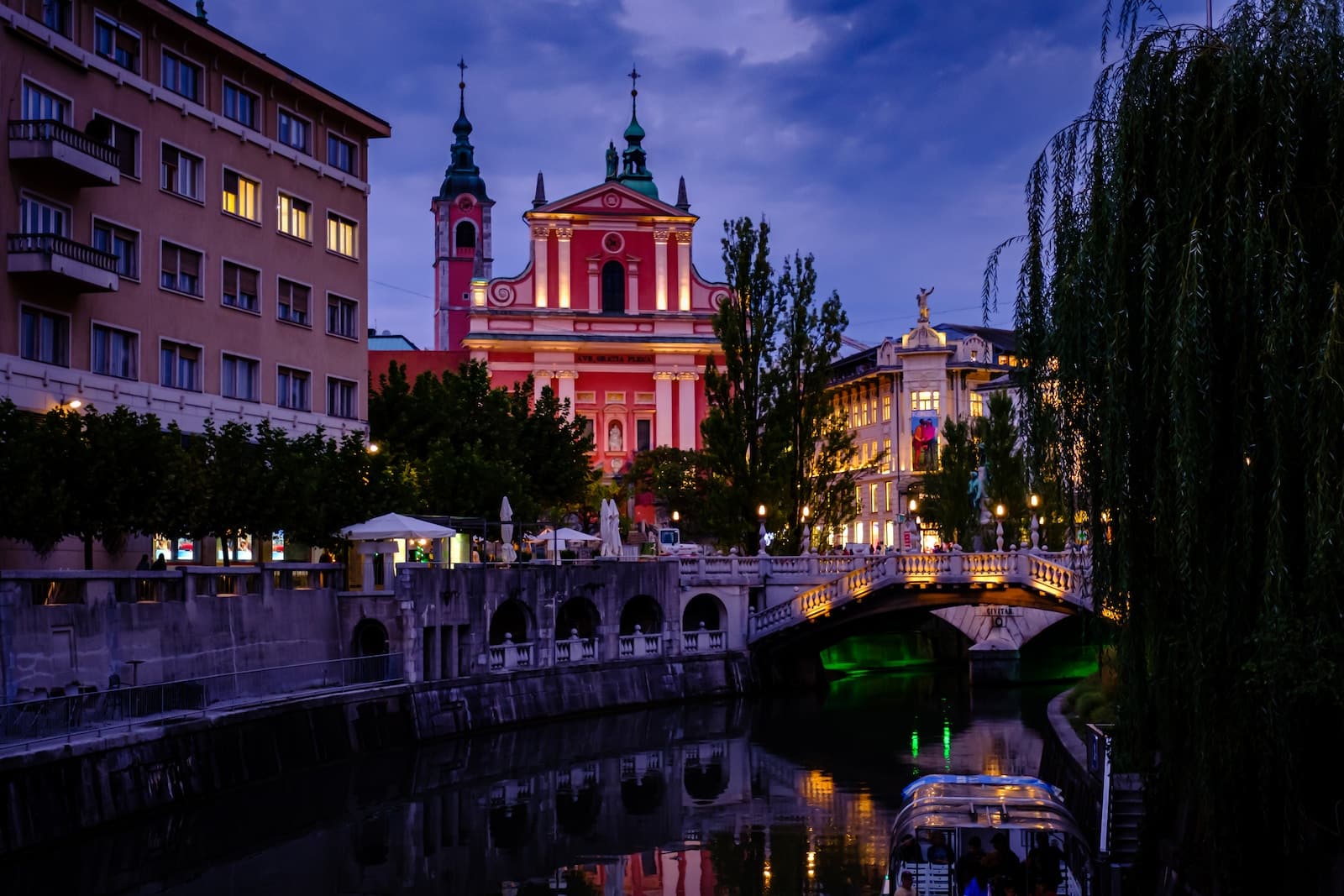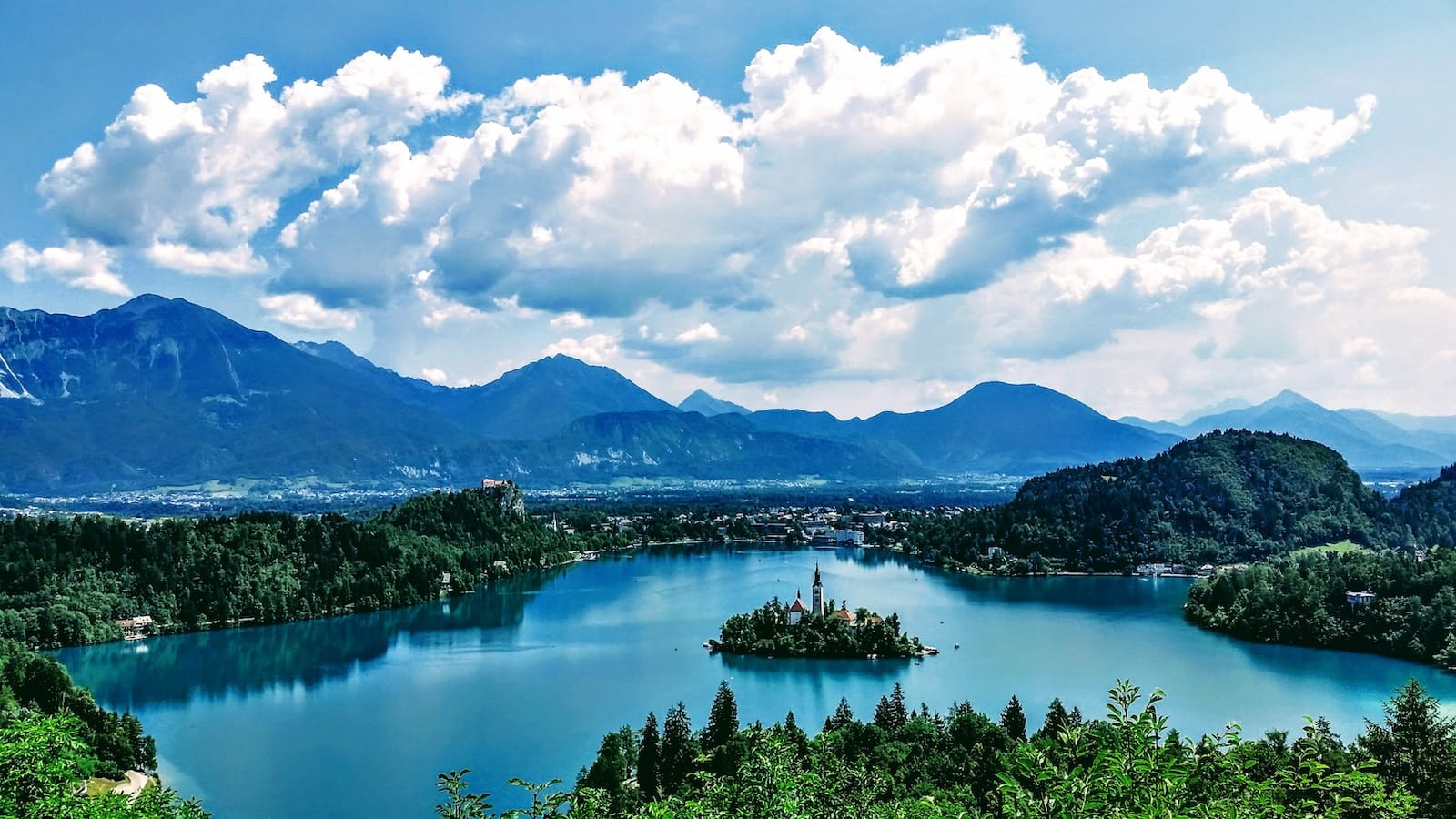To visit Ljubljana, Slovenia, is to discover a mesmerizing blend of past and present, effortlessly weaving centuries-old narratives with vibrant contemporary energy. During our extensive three-month journey across Europe, the three days we spent in Ljubljana captured our imagination.
Ljubljana’s narrative is as ancient as it is rich. The city, founded by the Romans, has evolved through the Middle Ages, witnessing the Renaissance, the Baroque period, and the modern era, each leaving an indelible mark. These epochs come alive in the cityscape, where Roman ruins blend with medieval structures and neo-classical masterpieces. The genius of Jože Plečnik, the city’s architectural maestro, resonates through bridges, marketplaces, and public buildings, each an ode to Ljubljana’s enduring spirit.
As twilight approached, the Ljubljanica River transformed into an enchanting canvas. The gleam from bustling riverside establishments—cafes, restaurants, boutiques, and galleries—reflected off the gentle waters, creating a tableau of shimmering gold. When you visit Ljubljana, you can’t miss the symphony of sounds: the distant strumming of a guitar, the clinking of glasses, and conversations in various languages.
Our adventures took a delightful turn as we rented bicycles. Navigating through alleyways, we discovered quaint bookshops, aromatic bakeries, and tranquil gardens. Each turn unveiled a new facet of Ljubljana’s diverse personality. As night fell, Ljubljana’s nightlife emerged resplendent. Cobblestoned streets buzzed with energy, from jazz bars to electronic dance venues, classical ensembles to bohemian poetry sessions.

The historic Triple Bridge is more than just an architectural gem—it’s Ljubljana’s soul set in stone. As we stood there, entranced by the serenades of street performers, the bridge seemed to whisper tales from its storied past. Its origins trace back to a humble wooden bridge known as the Old Bridge, which had existed since 1280. This singular structure, bearing witness to centuries of history, was the primary crossing over the Ljubljanica River for many years.
It was in the early 20th century that Ljubljana’s most celebrated architect, Jože Plečnik, cast his visionary gaze upon this simple bridge. Plečnik was an architect with a penchant for blending functionality with aesthetic charm. His vision for Ljubljana was one of a modern European capital, but he also intended to preserve the city’s rich historical and cultural fabric.
Upon the decrepit state of the Old Bridge, Plečnik saw an opportunity. Instead of merely redesigning the bridge, he envisioned an intricate network of three bridges—a central stone bridge flanked by two pedestrian walkways. His design was not only functional, aiding in the flow of traffic and pedestrians, but also symbolic. For Plečnik, the Triple Bridge represented a confluence of Ljubljana’s past, present, and future. He masterfully integrated classical architectural elements like balustrades and staircases with a modern understanding of urban movement.
Beyond its structural innovation, Plečnik’s Triple Bridge was a spatial masterpiece. He reimagined the bridge as a grand urban living room—a space for gatherings, performances, and interactions. The adjoining Preseren Square was transformed into an amphitheater of urban life, with the Triple Bridge serving as its main stage.
Under Plečnik’s meticulous guidance, the Triple Bridge metamorphosed from a functional structure to an emblem of Ljubljana’s evolving identity. Its central position, right at the heart of the city, bore testament to its importance, not just as a crossing point but as a nexus of cultural, historical, and social interactions.
Today, as we navigated the bridge, it was clear that Jože Plečnik’s legacy was deeply embedded in its stones. The Triple Bridge wasn’t just a testament to Ljubljana’s architectural renaissance but a symbol of a city seamlessly marrying its rich history with a vision for the future.
Abi Falafel, located in a quaint corner, presented a delightful contradiction. While we relished the Middle Eastern delicacies, our vantage point granted captivating views of Ljubljana’s rhythm: shoppers haggling, children playing, and artists capturing the city’s essence on canvas.
The Ljubljana Castle, perched dominantly atop a hill, was a journey through Slovenia’s tumultuous yet captivating history. Each brick and turret told tales of invasions, renaissances, and royal affairs. The views from this medieval sentinel were breathtaking, encompassing red-tiled roofs, verdant parks, and distant hills.
The Ljubljanica River’s charm wasn’t restricted to its banks. Paddleboarders navigated its gentle currents as we watched a bench on the river’s banks. The Dragon Bridge, an emblem of Ljubljana’s folklore, stood majestically, its statues guarding the city’s tales and legends. Butcher’s Bridge, a more recent addition, symbolized modern love tales. Thousands of locks, representing love vows, hung weightily, a testament to countless romantic promises.

From Ljubljana, the majestic Slovenian Alps rise up, beckoning with an allure that’s impossible to resist. A short drive transported us to a world of towering peaks, emerald-green lakes, and picturesque alpine villages. Among the must-visit attractions that we encountered in the Slovenian Alps:
While the city of Ljubljana is a gem in its own right, the proximity to such breathtaking alpine wonders accentuates the allure of the capital, offering a harmonious blend of urban charm and natural splendor.
Ljubljana is a magical confluence of histories, cultures, sounds, and sights. From its labyrinthine lanes to its dynamic nocturnal scenes and the awe-striking Alps just a stone’s throw away, our journey was a vivid tapestry of unforgettable moments.
Sign up for the Hop Skip Jump newsletter to receive your discount code. Get access to travel tips, guides & inspiration as well as new tour destinations right in your inbox.